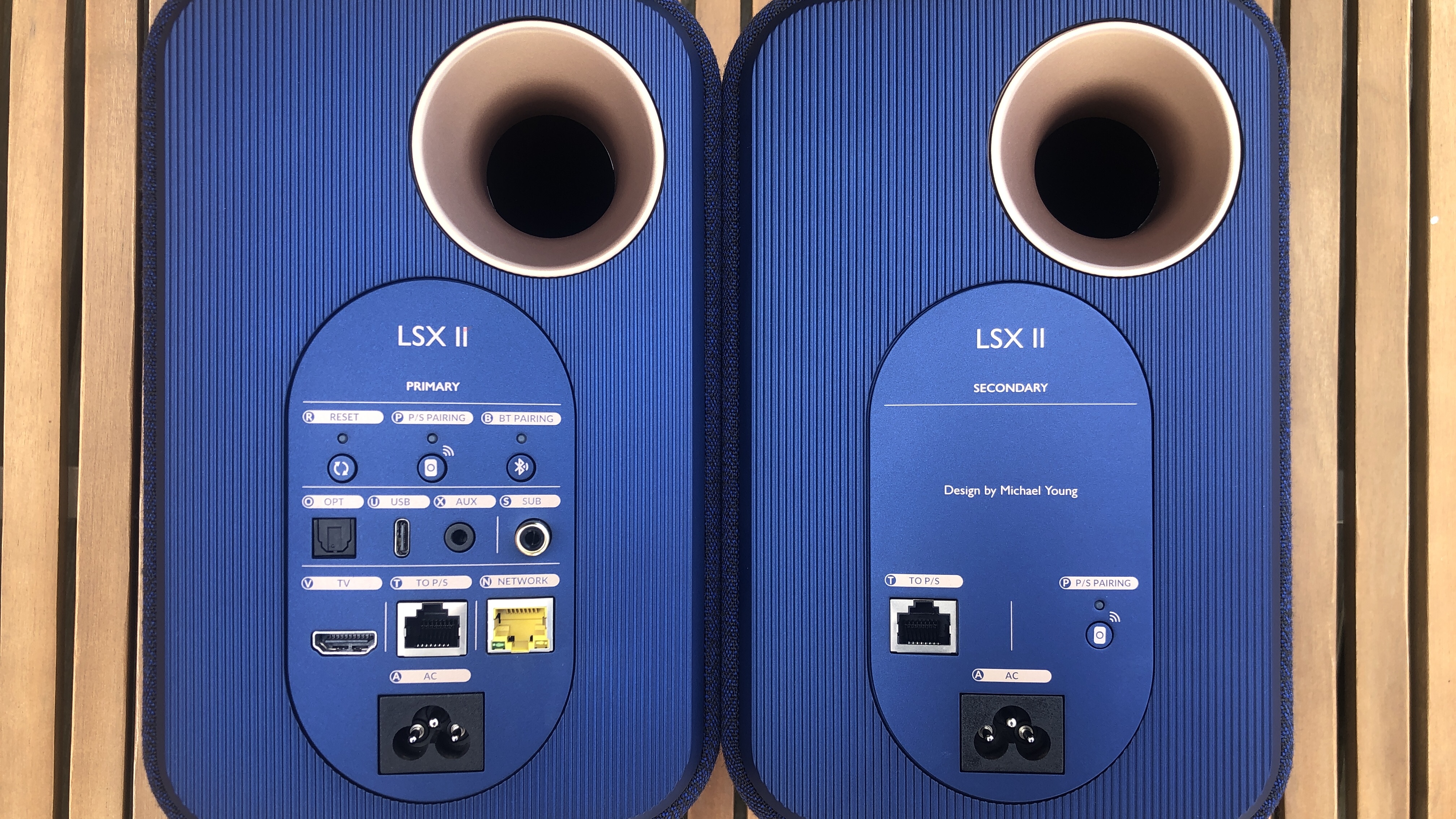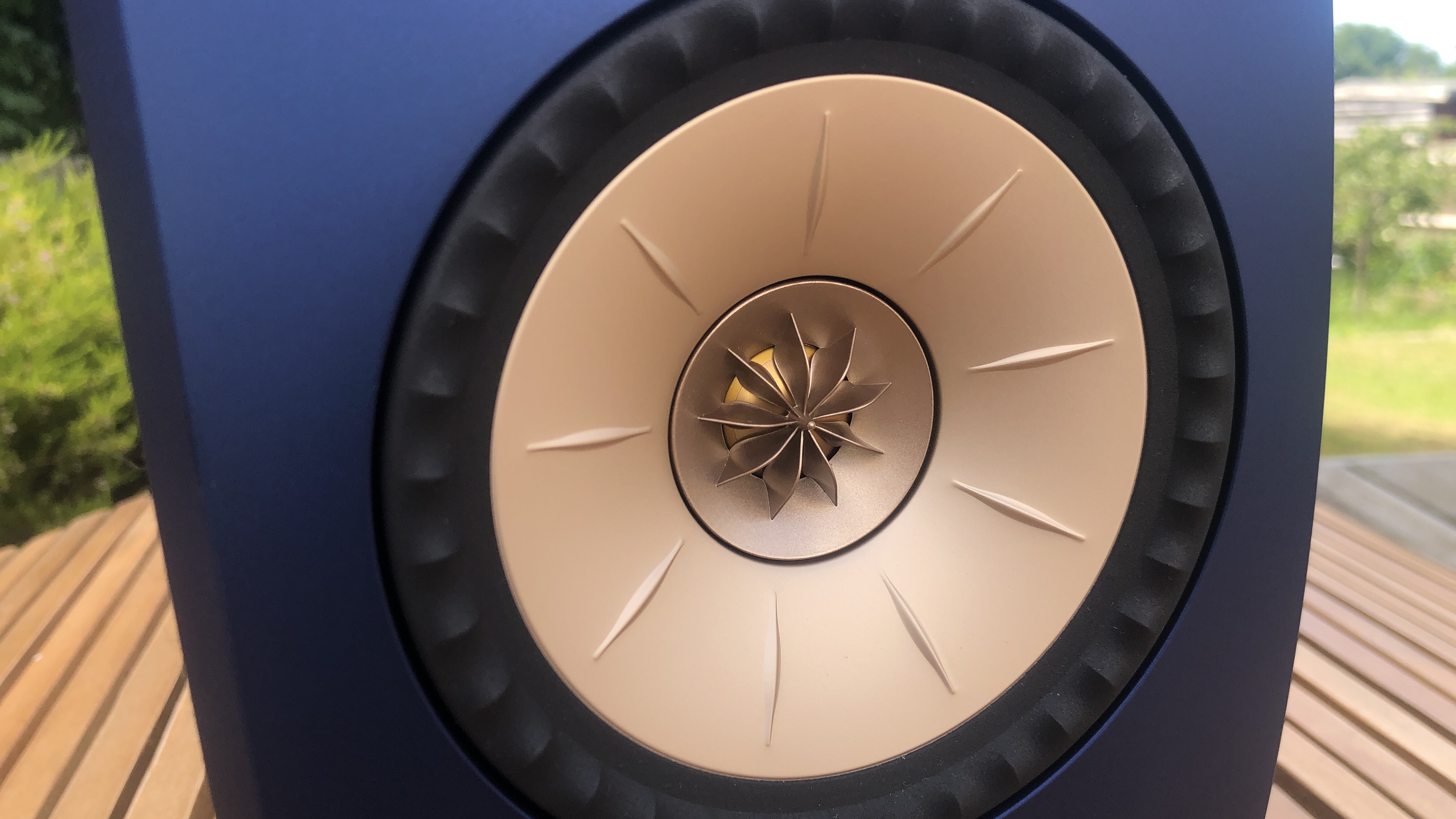KEF LSX II review: a sensational speaker package
The second-gen KEF streaming speaker package is seriously stellar, as we explore in our LSX II review


The accommodations you need to make are few, and mostly concern the straightforward scale of sound you ought to expect. Get beyond this and there’s not a lot of downside to KEF LSX II ownership – it’s a great-sounding system with excellent flexibility, and so is cracking value for money.
-
+
Potent and enjoyable sound
-
+
Diminutive good looks and great finish
-
+
Extensive connectivity
-
-
Sound better with speakers wired together
-
-
Optional stands and brackets are quite pricey
-
-
Struggle to fill larger spaces
Why you can trust T3

Almost four years since KEF first miniaturised its excellent LS50 Wireless streaming speaker system into something a little more handily sized, the company is back with an upgrade. Or, at least, that’s what KEF claims – at first glance, it doesn’t seem that much has happened beyond adding ‘II’ to the KEF LSX model name and a couple of hundred onto the asking price.
Almost four years since KEF first miniaturised its excellent LS50 Wireless streaming speaker system into something a little more handily sized, the company is back with an upgrade. Or, at least, that’s what KEF claims – at first glance, it doesn’t seem that much has happened beyond adding ‘II’ to the KEF LSX model name and a couple of hundred oto the asking price. least…
KEF LSX II review: price and release date
The KEF LSX II is on sale now, and in the United Kingdom it’ll set you back £1,199. That puts it at around $1,399 in the United States, and AU$2,199 or thereabouts in Australia.
Despite a price rise over the model it replaces, the LSX II nevertheless looks to represent decent value for money when you consider the extent of its functionality.
That’s not to say it has the field clear, though – wireless audio systems, both true stereo and single-box alternatives, from the likes of Devialet (with its Phantom), Naim (Mu-so 2) and Q Acoustics (Q Active 200), are all vying for your attention.
KEF LSX II review: Features and what's new

The LSX II use the same driver arrangement as the outgoing model – it’s the 11th generation of KEF’s remarkable Uni-Q arrangement that positions an aluminium tweeter (19mm in this instance, and behind an elaborate wave-guide) in the throat of an aluminium mid/bass driver (115mm). At 200 Class D watts (30W to each tweeter, 70W to each mid/bass driver), power is unchanged too.
Connectivity is improved, though, and significantly. As well as the Ethernet, digital optical and analogue 3.5mm inputs on the left-channel ‘primary’ speaker, there’s now also HDMI ARC and USB-C.
Get all the latest news, reviews, deals and buying guides on gorgeous tech, home and active products from the T3 experts
The original LSX’s subwoofer pre-out is retained, and there’s still an Ethernet-style CAT 5 socket for hard-wiring this speaker to the ‘secondary’ right-hand channel. They can be paired wirelessly too (each has a ‘pairing’ button), but a hard-wired connection is preferable if for no other reason than it allows the LSX II to function at 24bit/96kHz. Paired wirelessly, they max out at 24bit/48kHz – although no matter how you connect them they’re always compatible with MQA and file sizes up to 24bit/384kHz and DSD256. They just downsample them.
All of this activity is governed by new control software and KEF’s new W2 streaming platform. So wireless connectivity options are extensive, with Apple AirPlay 2, Bluetooth 4.2, Chromecast and wi-fi all on the menu. The LSX II are Roon Ready, too.
KEF LSX II review: Performance

Yes, it’s obvious – but it needs saying anyway. The KEF LSX II are not big speakers, and they don’t feature big drivers. So if you’re expecting the sort of scale of audio presentation that can fill a fairly big room with sound, think again. Physics has its laws, and KEF can’t help but abide by them like the rest of us.
But as long as you’re not expecting unlikely scale, the rest of the news regarding the way the LSX II performs fluctuates between ‘very good’ and ‘great’. The addition of extra functionality hasn’t compromised the way the system sounds – it’s just made its sound available to a great variety of sources.
And anyway, don’t think that just because the KEF don’t generate significant scale they sound in any way cramped. The soundstage they describe is well laid out, easy to understand and allows every element of even a complicated recording a little elbow room in which to do its thing.
As far as tonality is concerned, the LSX II is just slightly warmer than absolutely neutral. It’s not in any way overheated, you understand – it almost makes the KEF system sound more accommodating and welcoming than it otherwise would.

Those pesky physics laws insist that these speakers don’t dig as deep or hit as hard in the low frequencies as bigger alternatives, but the bass the KEF system produces is nevertheless solid, textured, detailed and really well controlled.
The attack and decay of individual bass sounds is straight-edged and convincing, and the LSX II generates more than enough momentum to keep rhythms and tempos moving forward in a natural-sounding manner. The midrange is equally accomplished, with the KEF extracting even fine details from a singer’s performance and making them available. And the top of the frequency range is almost a mirror-image of the bottom: there’s substance, detail and control, all delivered with real energy.
One of the most admirable traits of the KEF Uni-Q driver arrangement is the remarkable stereo focus it delivers, and that’s as true of this implementation as it is every other. And because the LSX II is so compact, there’s bound to be a temptation to use them on a desktop (a fairly big and fairly tidy desktop, you understand – nothing like mine) – and if you do, the Uni-Q comes bounding into its own. The focus and precision of its presentation is really brought into sharp relief by the near-field position – and so the closer you sit to the speakers (within reason, of course) the more accurate and engrossing their sound.
KEF LSX II review: design and usability
As far as design goes, there’s virtually nothing to differentiate the LSX II from the model it replaces. Same looks, same dimensions, same driver array… only a long stare at the spec-sheet reveals any meaningful differences.
Mind you, that’s not automatically a bad thing. The original KEF LSX was a good-looking thing, and just because the design is getting on for four years old that doesn’t mean it’s any less attractive.
LSX II is available in five different finishes – satin matte for ‘mineral’ white, gloss for ‘lava’ red, and Kvadrat acoustic cloth for ‘carbon’ black and the ‘cobalt’ blue of this review sample. There’s also ‘Soundwave’, a finish created in collaboration with the late Terence Conran.
At a useful compact 24 x 16 x 18cm (HxWxD) per speaker, the LSX II is simple to position more or less anywhere you like – as long as you bear in mind each speaker has a rear-facing bass-reflex port, that is. They’re happy on a shelf, a speaker stand or even a desk (for those who take their desktop listening very seriously indeed and have quite a large desk). There are some bespoke KEF speaker stands available (the S1) for £320 a pair, as well as the B1 wall bracket (£190) and P1 desk pad (£140) – so your placement options are extensive.
Where control is concerned, the LSX II step on decisively from the outgoing model. The original LSX was somewhat hamstrung by suboptimal app control – but the LSX II are compatible with the KEF Connect app, which is useful, quite far-ranging and – crucially – stable. It's where you can access internet radio, integrate your preferred music streaming service, get at the content stored on your local network and more besides. There’s plenty of EQ adjustment available, and some calibration functionality that assesses your room’s acoustic characteristics and considers the speakers’ position within it. It’s a painless and simple way to get what you want from the LSX II – it’s definitely superior to the bog-standard little remote control handset that’s provided as an alternative.

KEF LSX II review: verdict

If you already own a KEF LSX system and you’re not desperate to introduce your TV into its sphere of influence, it’s hard to make a case for upgrading to the LSX II. If you want to fill a pretty big room with sound, you should probably look beyond this system too.
For the rest of us, though, it’s hard to make a case not to investigate it fully – the LSX II is small, perfectly forward, expansive in its functionality, features a well-implemented control app, looks the business and sounds the business too.
Also consider
They’re not as desktop-friendly as the LEF LSX II and they’re more expensive, but the Q Acoustics Q Active 200 system addresses the few shortcomings of the KEF system while adding a unique aesthetic into the mix. You’re trading a little warmth for a lot of scale, which for some listeners could be just the ticket.
Simon Lucas is a freelance technology journalist and consultant, with particular emphasis on the audio/video aspects of home entertainment. Before embracing the carefree life of the freelancer, he was editor of What Hi-Fi? magazine and website – since then, he's written for titles such as Wired, Metro, the Guardian and Stuff, among many others. Should he find himself with a spare moment, Simon likes nothing more than publishing and then quickly deleting tweets about the state of the nation (in general), the state of Aston Villa (in particular) and the state of his partner's cat.
